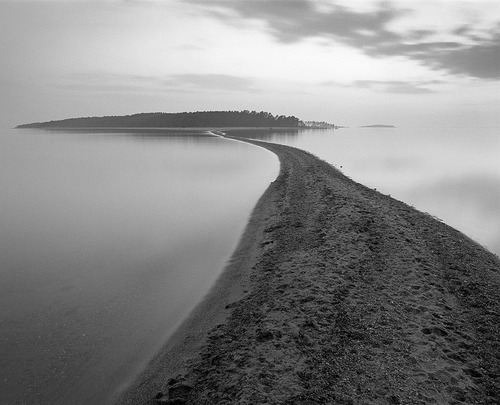One of my friends recently recommended that I read ‘The Antidote: Happiness for people who can’t stand positive thinking‘. It’s an interesting read and Burkeman certainly takes a contrarian stand that he also pursues in his weekly columns for the Guardian.
My reaction to the book as I was reading it was that I didn’t realize that I was supposed to be striving to be happy. I’ve been very focused on ensuring that I’m doing things that I want to do, that are engaging and ultimately fun, rather than trying to be happy.
One of the major threads in the book is that goal setting doesn’t work and in fact worse than that, goals can lead people, teams and companies over the cliff like the mariners of old chasing the sirens call. Since I’ve been steeped in a goal setting environment almost since birth the notion of throwing goals out of the window strikes me as a little odd. How does anything get done without someone with the drive towards achievement? Without a sense of what they want to change and going out and making that change happen? I’d love to hear your thoughts on this.
To me the issue with goals is not the process of setting goals, or even breaking big goals into smaller achievable actions but rather the goals aren’t revisited and revised. ‘No plan survives first contact with the enemy’ and this is the issue with much of corporate goal setting. A lack of flexibility to adapt to changing circumstances.
Most people by now I would expect to have some across the SMART acronym:
- Specific
- Measureable
- Achievable
- Realistic
- Time bounded
The difficulty with this approach is that the bigger the goal, and the longer the event horizon the more uncertainly there is in our ability to decide whether the goal is achievable, realistic, and what the likely timing is. It is these factors that need to be revisited on a regular basis and reviewed and updated as more information comes in.
Overlaid on this is the need to make sure that goals as originally envisioned are aligned with your purpose and that this alignment is also reviewed regularly to ensure that this is a goal that you still wish to pursue.
Perhaps a good case in point would be my goal to have a book of my photography out by the end of the year. This aligns with my overall purpose that boils down to ‘make things and get them out into the world’. It’s SMART(ish) and yet with additional thought and reflection I realize that the timing is probably off – it will most likely take 12 months, that it’s not a project that I could complete on my own but will need to engage at least a book designer to help and so will need to be revised, most likely to ‘Release a book of my photographs before the end of 2015’ with many subgoals along the way. ‘Identify and engage a book designer by the end of Q3 2014’ for instance, ‘decide on preliminary cut of photographs for inclusion into book Q4 2014’ and on and on. Each of these of course will also have sub-goals and will be further scrutinized to ensure a high likelihood of success.
Are you a goal setter? What works for you? How do you keep projects on track and moving forward? Please share your best practices in the comments.


